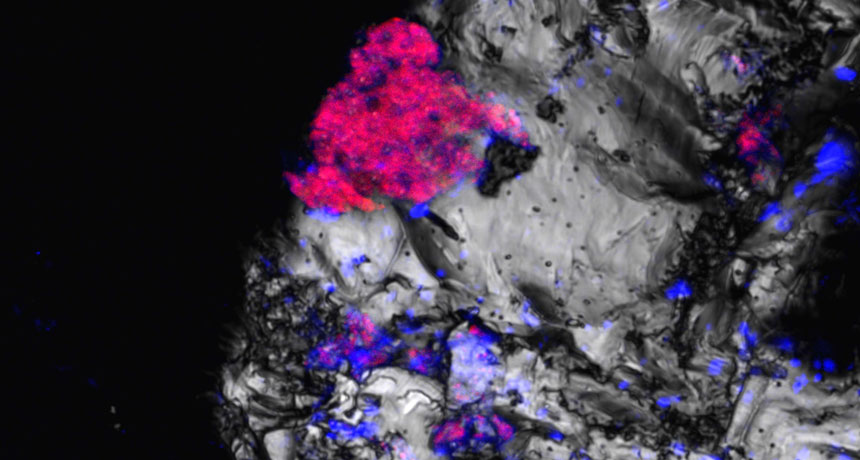These light-loving bacteria may survive surprisingly deep underground
Some cyanobacteria may consume hydrogen to grow without sunlight

WHAT LURKS BENEATH This fluorescence micrograph shows traces of cyanobacteria (pink and blue), which typically need sunlight to survive, on a mineral collected more than 600 meters underground.
F. Puente-Sánchez/PNAS 2018






